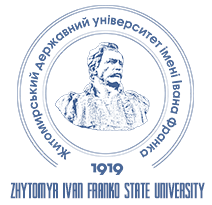Aesthetic Principles of Training Future Teachers in Podillia Women's Religious School (the Second Half of XIX – Beginning of XX Century)
DOI:
https://doi.org/10.35433/pedagogy.1(87).2017.60-63Keywords:
church singing, music, crafts, Tulchin eparchial women's college, Podilsk religious women's college, N. Leontovich, PodilliaAbstract
An important issue of the school remained a training of the teacher staff in Podillia in the second half of XIX – beg. of XX century. A significant part in the formation of an elementary school teacher played women religious school: The article deals with Podolsk religious women's college and spiritual Tulchynsk women's college where much attention was paid to the study of the subjects of aesthetic direction. In the research the author defined the features of content of educational programs of the aesthetic subjects such as church singing, music, crafts, drawing. The meaning and the importance of literary readings, literary vocal and musical events, which have been putting into the educational process of female religious schools were determined in the context of future teachers' personality. Educational activities of N. Leontovich in Tulchyn eparchial women's college were considered. It was also proved that N. Leontovich in his work with pupils followed the progressive teaching methods and principles using the achievements in traditional musical pedagogy both Western European and Ukrainian authors who are still relevant today. It was proved that the first teaching of the subjects in the female religious schools of Podillia in the second half of XIX – beg. of XX century had a positive influence on the formation of personality, taste, elegance – qualities that are necessary for future teaching pupils of schools. It was proved that the aesthetic elements in the educational system in the female religious schools of Podillia in the second half of XIX – beg. of XX century were focused on making future teachers have their own arsenal of means of the self-realization with the help of which they will convey to the students their beliefs.
References
Podol'skie eparkhial'nye vedomosti [Podillia Diocesan Bullietin] . – 1864. – № 15. – S. 173–176, 525–539.
Derzhavnyy arkhiv Khmel'nyts'koyi oblasti [State Archives of Khmelnytskyi Region]. – F. – 315. – Op. 2. – Spr. 465. – 339 ark.
Podol'skie eparkhial'nye vedomosti [Podillia Diocesan Bullietin]. – 1863. – № 21. – S. 831–833.
Podol'skie eparkhial'nye vedomosti [Podillia Diocesan Bullietin]. – 1865. – № 19. – S. 836–839.
Podol'skie eparkhial'nye vedomosti [Podillia Diocesan Bullietin]. – 1888. – № 4. – 67 s.
Podol'skie eparkhial'nye vedomosti [Podillia Diocesan Bullietin]. – 1887. – № 4. – S. 49–56.
Podol'skie eparkhial'nye vedomosti [Podillia Diocesan Bullietin]. – 1885. – № 50. – S. 815–828.
Podol'skie eparkhial'nye vedomosti [Podillia Diocesan Bullietin]. – 1886. – № 34. – S. 673–690.
Podol'skie eparkhial'nye vedomosti [Podillia Diocesan Bullietin]. – 1893. – № 29. – S. 597–604.
Podol'skie eparkhial'nye vedomosti [Podillia Diocesan Bullietin]. – 1904. – № 25. – 553 s.
Pravoslavnaia Podoliia[Orthodox Podillia]. – 1911. – № 11. – S. 227–238.
Pravoslavnaia Podoliia[Orthodox Podillia]. – 1909. – № 7. – 146 s.
Downloads
Published
Issue
Section
License

This work is licensed under a Creative Commons Attribution-NonCommercial-NoDerivatives 4.0 International License.
Authors published in this journal agree to the following terms:
a) The authors reserve the right to author their work and grant the journal the right to first publish this work under the Creative Commons Attribution License, which allows others to freely distribute the published work with a mandatory link to the authors of the original work and the first publication of the work therein magazine.
b) Authors have the right to enter into separate additional agreements regarding the non-exclusive distribution of the work in the form in which it was published by this journal (for example, posting work in an electronic repository of the institution or publishing as part of a monograph), provided that the reference to the first publication of the work is maintained therein. magazine.
c) Journal policy permits and encourages the submission of manuscripts by the authors on the Internet (for example, in repositories of institutions or on personal websites), both prior to submitting this manuscript to the editorial board and as it contributes to the emergence of productive scientific discussion, and has a positive impact on the promptness and dynamics of citing a published work (see The Effect of Open Access).

 ISSN
ISSN 





